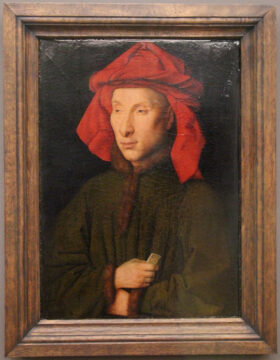Gregory T. Clark at The New Criterion:
 Over the course of the thirty years that I taught art history to college undergraduates, introducing my students to the manuscript illuminations and panel paintings of the fifteenth-century Flemish painter Jan van Eyck always gave me an especial pleasure. I wanted my students to share in my wonderment at Jan’s seemingly effortless ability to present nature rather than represent it, right down to the most infinitesimal details, without compromising the integrity of the whole, his powers of observation complemented by an uncanny ability to capture light, texture, and atmosphere.
Over the course of the thirty years that I taught art history to college undergraduates, introducing my students to the manuscript illuminations and panel paintings of the fifteenth-century Flemish painter Jan van Eyck always gave me an especial pleasure. I wanted my students to share in my wonderment at Jan’s seemingly effortless ability to present nature rather than represent it, right down to the most infinitesimal details, without compromising the integrity of the whole, his powers of observation complemented by an uncanny ability to capture light, texture, and atmosphere.
The earliest surviving works of Jan—who is thought to have been born around 1390 in Maaseyck, modern-day Belgium—date to the first lustrum of the 1420s. In 1425, he was appointed court painter to Philip the Good, Duke of Burgundy, whose empire then comprised almost the entirety of the Low Countries and a large wedge of northeastern France together with his home duchy of Burgundy and the contiguous Franche-Comté (Free County) to the east.
more here.
